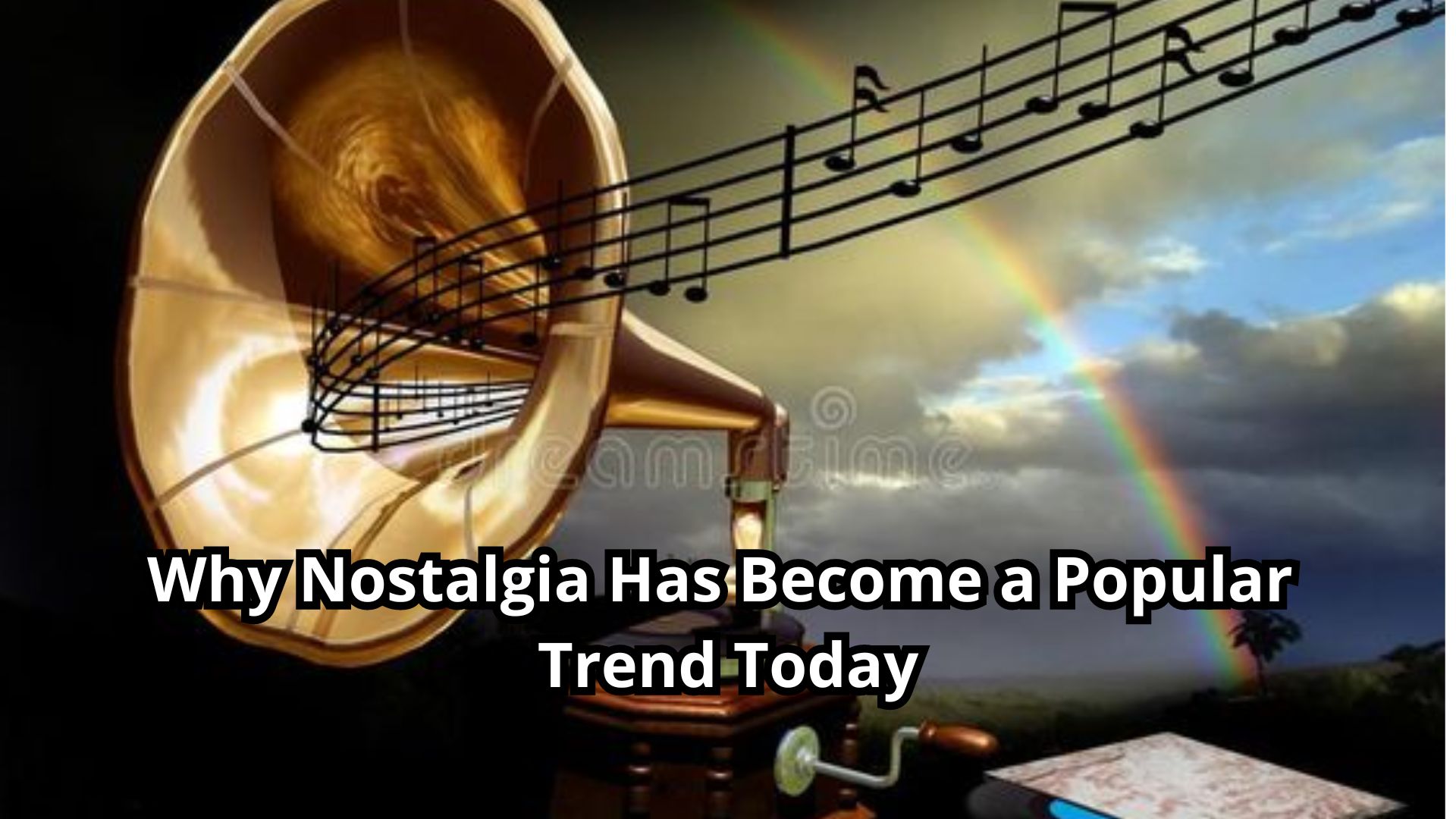
Nostalgia has emerged as a cultural trend gaining immense popularity, particularly in the digital era. This phenomenon is not only reflected in fashion and music but also in movies, social media, and even technology. Nostalgia offers comfort and a sense of security by recalling memories of a simpler, happier past. But why is nostalgia so appealing today? Here are some key reasons why nostalgia has become a popular trend in modern times.
- 1. ESCAPING THE PRESSURES OF MODERN LIFE
- 2. EMOTIONAL POWER OF CHILDHOOD MEMORIES
- 3. THE ROLE OF SOCIAL MEDIA IN SPREADING NOSTALGIA
- 4. RETURN OF RETRO PRODUCTS AND STYLES
- 5. MEMORY-BASED CONSUMERISM
- 6. BRIDGING GENERATIONS THROUGH POP CULTURE
- 7. CREATIVITY IN REPACKAGING THE PAST
- 8. PROVIDING COMFORT AMID UNCERTAINTY
- 9. CONCLUSION
ESCAPING THE PRESSURES OF MODERN LIFE
Modern life is often filled with pressures, from work
demands to rapid technological advancements and increasingly complex social
challenges. Nostalgia provides an escape from these realities by bringing back
pleasant memories of the past. Reminiscing about simpler, stress-free times
offers people a sense of calm. This powerful emotional pull is one of the main
reasons for the growing trend of nostalgia, evident in the resurgence of old TV
shows, classic video games, and retro fashion styles.
EMOTIONAL POWER OF CHILDHOOD MEMORIES
Nostalgia carries a strong emotional appeal. For many,
childhood memories are among the most cherished moments in their lives. When
individuals revisit their childhood through music, movies, or games they loved,
it triggers warm, familiar feelings. This makes nostalgia a positive emotional
experience, which is why many brands and entertainment industries leverage this
trend by re-releasing products or tapping into popular culture elements from
the past.
THE ROLE OF SOCIAL MEDIA IN SPREADING NOSTALGIA
In the digital age, social media plays a major role in
amplifying nostalgia. Platforms like Instagram, TikTok, and Twitter are filled
with content that evokes memories of the past. From #throwback hashtags to
videos showcasing 90s and 2000s music or fashion, nostalgia is constantly
promoted by influencers and online communities. Social media has become a place
where people can share past experiences and rediscover cultural elements they
may have forgotten.
RETURN OF RETRO PRODUCTS AND STYLES
One tangible manifestation of the nostalgia trend is the
revival of retro products and styles. Whether it’s in the fashion world, with
the resurgence of 80s and 90s clothing trends, or in technology with the
popularity of vintage gadgets like Polaroid cameras and old gaming consoles,
the appeal of nostalgia is undeniable. These retro products not only offer a
unique experience but also connect the past with the present. Modern versions
of classic products give consumers a blend of familiarity and innovation.
MEMORY-BASED CONSUMERISM
Nostalgia is also driven by memory-based consumerism. Many
companies use nostalgia as a marketing strategy to attract consumers who want
to relive their past experiences. Major brands frequently re-release iconic
products from the past, such as classic sneakers, limited-edition soft drinks,
or reboots of popular movies and TV shows. This strategy successfully captures
the attention of consumers, particularly those who grew up with these products.
BRIDGING GENERATIONS THROUGH POP CULTURE
Nostalgia has the ability to bridge different generations.
For example, parents sharing their memories of past movies, music, or games
with their children can create stronger emotional bonds. The revival of
nostalgic products provides an opportunity for younger generations to enjoy
what the older generation once loved. This cross-generational experience
strengthens the appeal of nostalgia across society.
CREATIVITY IN REPACKAGING THE PAST
Nostalgia isn’t just about reliving the past but also about
how the past is repackaged to stay relevant today. Many creative industries use
nostalgic elements in their work, such as remixed music, film remakes, or
retro-modern fashion collaborations. This way, the past is revived with a fresh
twist that resonates with contemporary tastes. This creativity keeps nostalgia
feeling fresh and exciting, even though it’s rooted in the past.
PROVIDING COMFORT AMID UNCERTAINTY
In times of uncertainty, such as during a global pandemic or
economic crises, many people find comfort in remembering the past, which they
perceive as more stable and secure. Nostalgia offers a sense of control and
tranquility during challenging situations. Memories of childhood, family
gatherings, or carefree moments provide solace to those facing the stresses of
modern life.
CONCLUSION
Nostalgia has become a popular trend today due to various
factors, including the desire to escape modern pressures, the emotional power
of childhood memories, and the role of social media in spreading nostalgic
content. The return of retro products and the creativity in repackaging the
past also contribute to its widespread appeal. In a world filled with
uncertainty, nostalgia provides comfort, security, and emotional connection.
All these reasons explain why nostalgia continues to thrive as a popular trend
in the digital age.
 English EN
English EN  Indonesia ID
Indonesia ID
